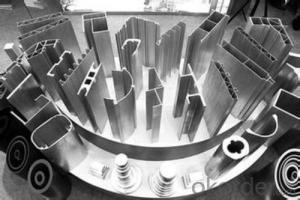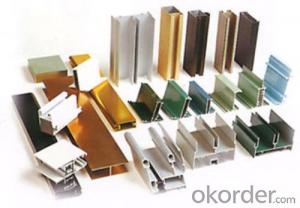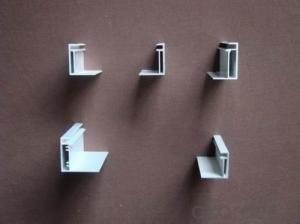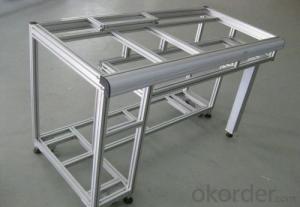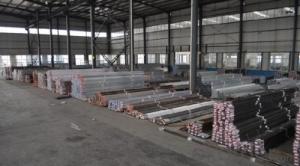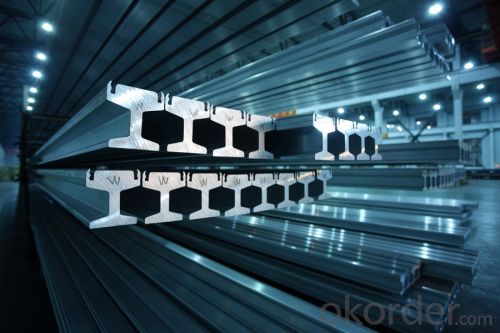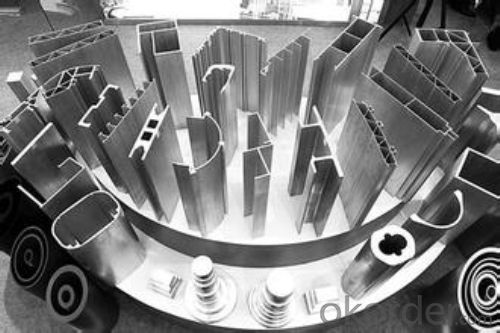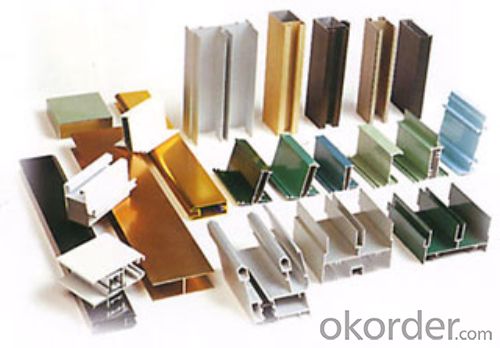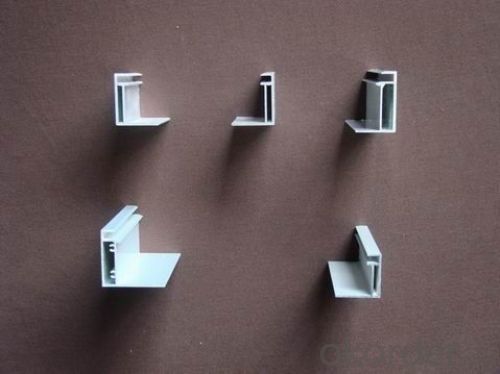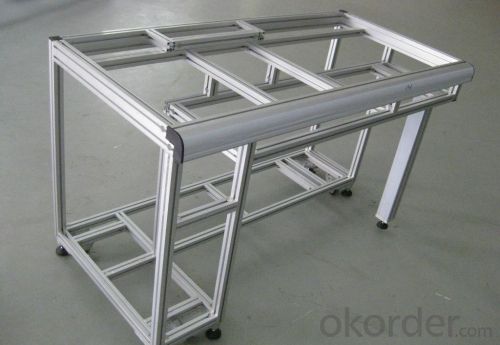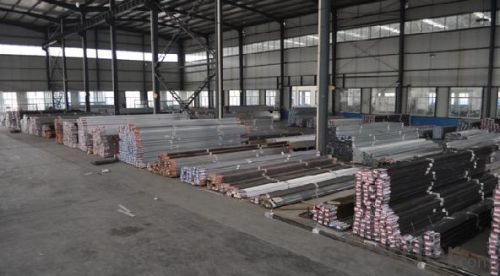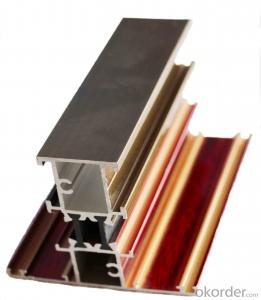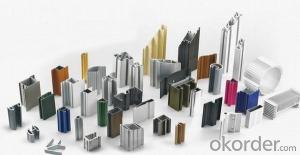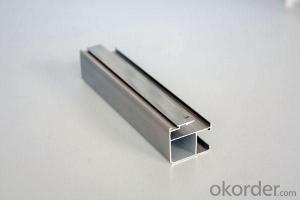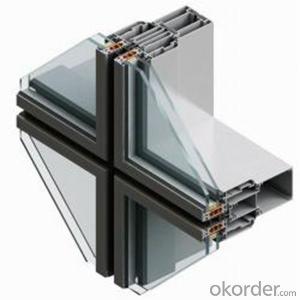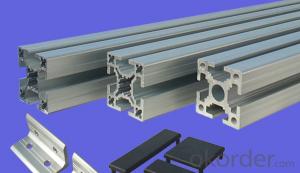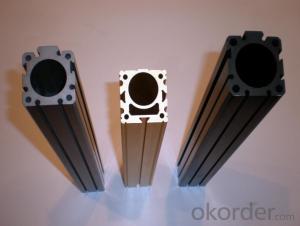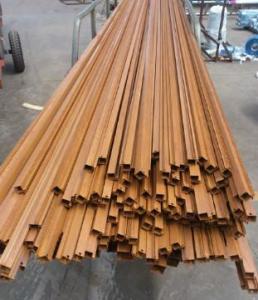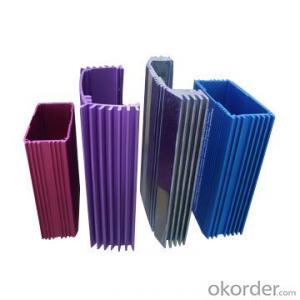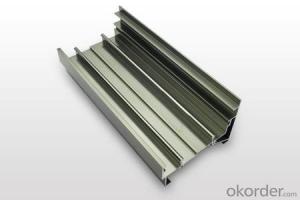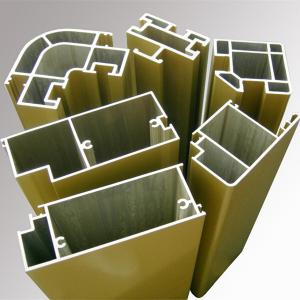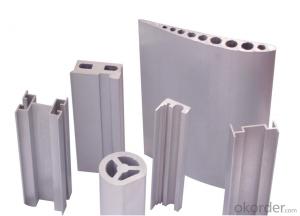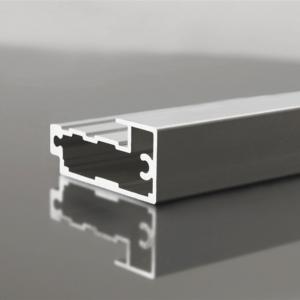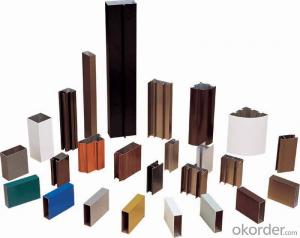Aluminum Profiles for Sale:Aluminum Window and Door Frame and Profile
- Loading Port:
- China main port
- Payment Terms:
- TT OR LC
- Min Order Qty:
- 0.1
- Supply Capability:
- 10000 m.t/month
OKorder Service Pledge
OKorder Financial Service
You Might Also Like
Aluminum Frame
Products Introduction
Aluminum frame is made from aluminum and minerals. It's raw matrial for window frame, window frame, and other equipment frame. It's easy for construction, cost less, service longer than other materails. The size and design can be customerized.
Advantage of Aluminum Frame
-Build FLEXIBLE equipment, window, door.
-Bolt your structure together
-Build with Aluminum MORE EASILY
-Aluminum costs LESS
-Service life is more than 10 years
-Can be customerized
Specifications
(1) Product: Aluminium Frame;
(2) Material: Alloy 6063/6061/6005/6060, T5/T6;
(3) Finish: anodizing, powder coating, wooden, electrophoresis or any color;
(4) Size: customized, same as drawings or samples;
(5) Standard: High-quality;
(6) Characteristics: strong, stylish, durable, corrosion-resistant.
Aluminium Alloy: 6063, 6061, 6005, 6060 Thermal Treatment: T5, T6
Section Shapes
I, U, T, C, Z, L, H, square, round, flat, hollow, t-slot, and other complicated shapes by custom design.
Surface treating
Mill / Anodizing (oxidation) / Sand blasting / Powder Coating / Electrophoresis / PVDFCoating / Wood effect.
Application
1) - for Window and door frames, for Wardrobe cabinet sliding doors, kitchen, for Building curtain glass walls
2) -for Fencing, Rail, Deck and Frame.
3) - for Solar panel frames, solar mounting / roofing brackets
4) - for Industry assembly lines equipment.
5) - for Heatsinks, for LED lighting.
7) - other by custom design size and dimension
FAQ
-What's your company profile?
We CNBM is the largest building material supplier of China. We are Chinese government owned corporation, which takes the 267th place in WOLD FORTUNE 500 CORPORATION. We own the largest prodcution base in North and South of China. With more than 15 warehouses and offices in different countries, our products sell very well all over the world. We have whole quality control system. We'll be your reliable partner.
-Which kind of payment do you usually support?
TT, LC at sight.
-Can you provide samples?
Yes, we provide free of charge samples, you just need to pay for the delivery.
Photos:
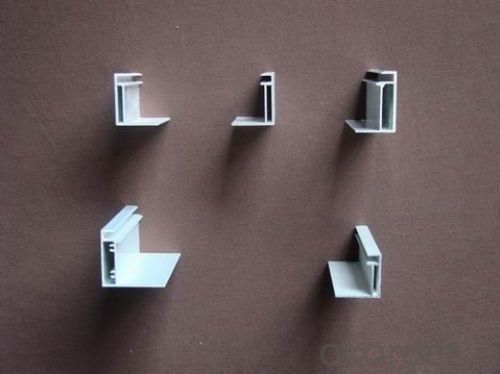
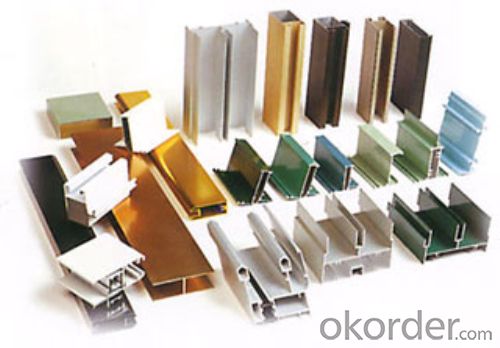
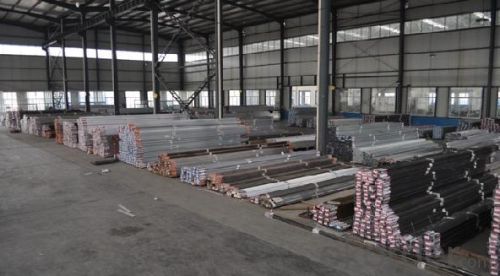
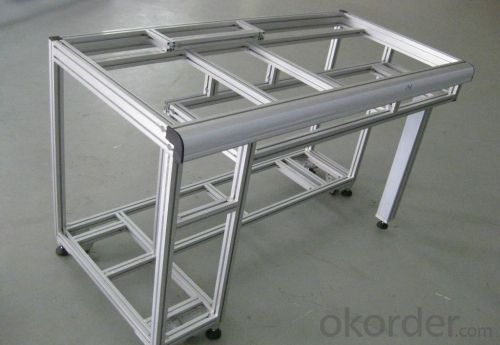
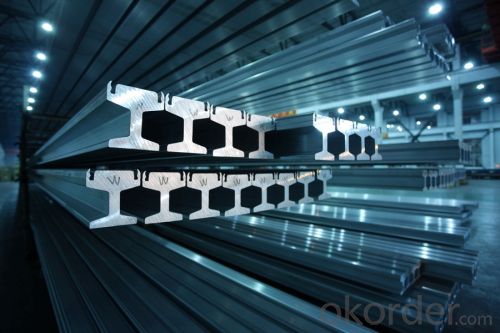
- Q: Are aluminum profiles suitable for constructing interior partitions or ceilings in commercial buildings?
- <p>Yes, aluminum profiles are commonly used for interior partitions and ceilings in commercial buildings. They offer several advantages such as strength, durability, and resistance to corrosion. Aluminum profiles are lightweight, easy to install, and can be custom designed to fit specific architectural requirements. They also provide good thermal insulation and can be used in both new constructions and renovations.</p>
- Q: What is the thickness of the aluminum alloy window frame?
- According to the provisions of GB5237.1-2008, aluminum profile wall thickness not less than 1.2mm. The size of the wall must be calculated after the pressure bearing is calculated.
- Q: How do you protect aluminum profiles from scratching or damage?
- There are multiple methods available for safeguarding aluminum profiles against scratches or damage. To begin with, a commonly used approach involves applying a protective coating or finish. This can be accomplished by utilizing paints, lacquers, or powder coatings that serve as a barrier between the aluminum surface and external elements. These coatings not only enhance the appearance but also offer protection against scratches, corrosion, and other forms of damage. Another effective temporary solution is the utilization of protective film or tape. These films or tapes can be directly applied onto the aluminum profiles, acting as a shield. Generally transparent, these films can be easily peeled off once the profiles are installed or ready for use. A different technique involves handling and transporting the aluminum profiles with caution. This entails the use of appropriate handling equipment, such as gloves, to avoid direct contact with the surface. Additionally, the use of protective packaging materials like bubble wrap or foam can provide cushioning during transportation, preventing scratches or dents. Regular cleaning and maintenance of the aluminum profiles is also crucial. Dust, dirt, and debris can act as abrasives, causing scratches over time. Cleaning with a soft cloth or sponge and mild detergent on a regular basis can help eliminate these particles and preserve the profile's appearance. Lastly, implementing proper storage practices is of utmost importance. Storing aluminum profiles in a dry and clean environment, away from sharp objects or heavy items, can minimize the risk of scratching or damage. The use of racks or shelves with protective padding can provide an additional layer of protection. By adhering to these measures, aluminum profiles can be effectively safeguarded against scratches or damage, ensuring their durability and preserving their aesthetic appeal.
- Q: Can aluminum profiles be used in display stand and podium manufacturing?
- Yes, aluminum profiles can definitely be used in display stand and podium manufacturing. Aluminum is a versatile and durable material that offers many benefits for these applications. Aluminum profiles are lightweight yet strong, making them ideal for creating portable and sturdy display stands and podiums. They can be easily customized and fabricated to meet specific design requirements, allowing for flexibility in creating unique and eye-catching display stands and podiums. Additionally, aluminum profiles have excellent corrosion resistance, which ensures that the displays and podiums will look good and last for a long time, even in outdoor or high-traffic environments. Overall, using aluminum profiles in display stand and podium manufacturing is a smart choice due to their versatility, strength, and durability.
- Q: This question asks for the standard specifications and measurements of aluminum profiles that are frequently utilized in construction projects.
- <p>Aluminum profiles used in construction come in various specifications and measurements. Commonly, they are categorized by series such as 6060, 6061, 6063, and 6082, each with different mechanical properties. Sizes can range from small profiles like 20x20mm to large ones like 200x200mm or more. Thicknesses typically vary from 1mm to 6mm, depending on the structural requirements. Lengths can be customized but are generally available in standard lengths such as 6 meters. The profiles are measured in terms of their width, height, and thickness, and they are designed to meet specific load-bearing and aesthetic needs in construction. It's important to consult with suppliers or construction specifications for the exact measurements required for a particular project.</p>
- Q: What are the specific needs or standards for utilizing aluminum profiles in cold weather conditions?
- <p>In cold climates, aluminum profiles must meet certain requirements to ensure durability and functionality. These include resistance to extreme temperatures, which may affect the material's strength and flexibility. Profiles should be made from high-quality aluminum alloys designed for low-temperature performance. Additionally, proper thermal breaks may be necessary to prevent heat loss through the profile. Corrosion resistance is also crucial, as cold environments can accelerate the process. Lastly, it's essential to consider the expansion and contraction of aluminum in cold temperatures, ensuring the design accommodates these changes to prevent warping or cracking.</p>
- Q: This question asks for the method to determine the amount of aluminum required for a construction project.
- <p>To calculate the weight of aluminum profiles needed for a building project, follow these steps: 1. Determine the length and cross-sectional area of each aluminum profile required. 2. Use the aluminum density, which is approximately 2.7 grams per cubic centimeter (g/cm鲁). 3. Multiply the volume (length 脳 cross-sectional area) by the density to get the weight of each profile. 4. Sum the weights of all profiles to get the total weight needed. Ensure to account for any additional material for joints, connections, and potential waste. It's also advisable to consult with an engineer or use specialized software for precise calculations tailored to your project's specific requirements.</p>
- Q: Can aluminum profiles be used for access control systems?
- Yes, aluminum profiles can be used for access control systems. Aluminum is a versatile and durable material that is commonly used in construction and various industries. It offers excellent strength-to-weight ratio, corrosion resistance, and can be easily shaped and fabricated. When it comes to access control systems, aluminum profiles can be utilized for the construction of doors, frames, and enclosures. These profiles can be designed to accommodate various components such as locks, hinges, control panels, and readers. The lightweight nature of aluminum makes it suitable for door and frame construction, as it allows for easy installation and maintenance. Additionally, aluminum profiles can be finished with different coatings to enhance their appearance and protect them from harsh environmental conditions. Anodizing, for example, can provide a durable and corrosion-resistant surface that can withstand constant use and exposure to the elements. Furthermore, aluminum profiles can be customized to meet specific design requirements. They can be easily cut, drilled, and assembled, allowing for flexibility in creating access control systems that fit the desired aesthetics and functionality. In summary, aluminum profiles are a suitable choice for access control systems due to their strength, lightweight nature, corrosion resistance, and versatility in design. They offer durability and can be easily customized to meet specific requirements, making them a reliable and practical option for securing access points.
- Q: Can aluminum profiles be used in the manufacturing of furniture?
- Yes, aluminum profiles can be used in the manufacturing of furniture. Aluminium profiles are lightweight, durable, and versatile, making them suitable for various furniture applications. They can be used to create frames, legs, handles, and other structural components in furniture designs. Additionally, aluminum profiles offer a modern and sleek aesthetic, making them popular in contemporary furniture styles.
- Q: How do aluminum profiles perform in blast-resistant structures?
- Aluminum profiles are widely used in blast-resistant structures due to their exceptional performance characteristics. These profiles offer several advantages that make them suitable for such applications. Firstly, aluminum profiles possess excellent strength-to-weight ratio, which allows them to provide high structural integrity while keeping the overall weight of the structure relatively low. This is crucial in blast-resistant structures as it helps to minimize the impact of an explosion and reduce potential damage. Furthermore, aluminum profiles exhibit remarkable corrosion resistance, making them highly durable in harsh environments. This is particularly important in blast-resistant structures, where exposure to intense pressure waves, debris, and extreme temperatures may occur during an explosion. Moreover, aluminum profiles have excellent energy absorption capabilities. They can effectively absorb and dissipate the energy generated by a blast, thereby reducing the impact on the structure and enhancing its overall blast resistance. This feature is essential in ensuring the safety of occupants and preventing structural failure. Additionally, aluminum profiles offer excellent design flexibility, allowing architects and engineers to create complex and innovative structures. This versatility enables the construction of blast-resistant structures that can be tailored to specific requirements and design constraints. In summary, aluminum profiles perform exceptionally well in blast-resistant structures due to their high strength-to-weight ratio, corrosion resistance, energy absorption capabilities, and design flexibility. These qualities make them a preferred choice for architects and engineers when designing structures that need to withstand the forces generated by an explosion.
Send your message to us
Aluminum Profiles for Sale:Aluminum Window and Door Frame and Profile
- Loading Port:
- China main port
- Payment Terms:
- TT OR LC
- Min Order Qty:
- 0.1
- Supply Capability:
- 10000 m.t/month
OKorder Service Pledge
OKorder Financial Service
Similar products
Hot products
Hot Searches
Related keywords

